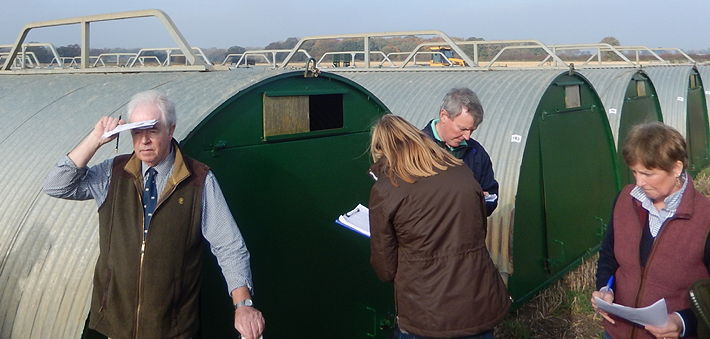Although Christmas is a time for giving and taking, it looks as though this year most producers are going to be given a hard time and take very little in return.
The SPP continues its downward slide losing another 0.72p to stand at 142.84p which puts it 8.2p below this time last year with the prospect of further falls in the SPP until the market stabiles and hopefully recovers.
The picture in Europe is generally of a stand on nature which means that cheap imports will keep heading this way and undercutting the domestic market.
The major UK weekly contribution price abattoirs have in the main stood on and prices remain between 138p at the tope and130p at the bottom. A chill wind continues to blow through the spot pig market with prices continuing to drift lower with some regular sellers now getting little more than 120p/kg and one off loads of heavy pigs remain virtually unsaleable.
A further weakening of the Pound has nudged the Euro up in value from 85p a week ago to 85.46p, but despite this cull sow values have remained virtually static with export buyers paying in the 23p – 26p/kg range in the main.
Still no AHDB weaner averages are being published ,but following the downward track of the SPP weaner prices are continuing to weaken and the wide gulf between contract and spot prices gets bigger.
RSPCA assured 7kg piglets on contract are generally selling in the £33.50-£36/head range and Red Tractor contract piglets remain at a discount of between £3-£5/head, but sadly it is a case of no room at the inn for one-off spot loads, which in some cases remain difficult to place at any price.
The situation is no better as far as feed costs are concerned, although some signs are emerging that global wheat prices have become slightly bearish, according to the latest USDA report summary, with heavier wheat crops reported in the USA, Russia, Australia and Canada, which might give the bulls a fright and help the pig industry…. we shall see.
Slightly easier UK feed wheat futures prices are quoted at around £225/t for January and £203/t for September 2022. Spot feed wheat prices have however firmed over the week, with an overall countrywide average of £221.30/t. Feed barley values are little changed with barley for January delivery at £217/t and for September 2022 at £189/t.
Proteins continue to climb in value putting more pressure on producers’ margin and during the past week Hipro soya meal has risen from £382/t to £393/t and longer months are also looking negative as far as producers are concerned, up from £344/t a week ago to £359/t today.
Rapemeal continues its dizzy ascent with January 2022 hitting £310/t, but longer months such as August – October 2022 looking more reasonable at £227/t.
And finally, the pig industry is all about numbers (or the lack of them in some cases) and the current situation is summarised below.
The latest estimated weekly slaughter figures of 193,800 head are higher than a week ago to the tune of 7,900 pigs, but 3,700 head lower than the same period a year ago.
Average carcass weights remain high at almost 92kg adding yet more pressure to abattoir equipment with frequent breakdowns.
On the staffing front, although the Government indicated that entry visas would be fast tracked for around 800 migrant pig butchers, industry sources are indicating that two of the major abattoir processors in the UK have only received job applications from around 20 workers each, so the prospect of catching up with the backlog of pigs still looks remote in the short term.
There are, however, signs that when the shortage of pig numbers in the system finally filters through prices could rebound and regenerate the pig meat supply chain, but sadly that may be a case of too little too late for those who are left in the industry.
In the meantime, the red numbers on many bank statements continue to give pig producers sleepless nights.




